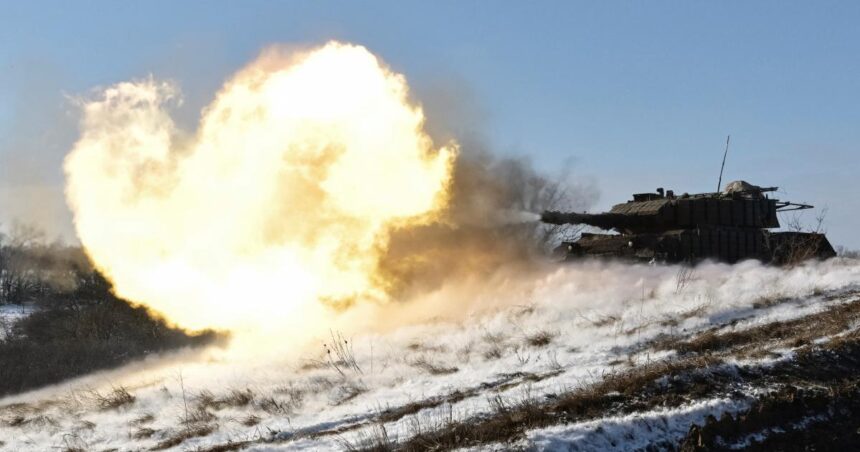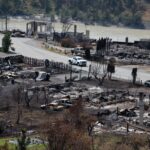The war in Ukraine has entered its third year with neither side poised for imminent victory. I’ve spent much of this conflict traveling between Washington’s policy circles and frontline villages in eastern Ukraine, witnessing firsthand how Western strategic calculus often fails to align with battlefield realities.
“They keep promising weapons that arrive too late,” a Ukrainian battalion commander told me last month near Avdiivka, as his soldiers rotated away from positions they would soon lose. “Meanwhile, my men die waiting.”
Despite Russia’s recent tactical gains around Avdiivka and parts of the Donbas, declarations of Ukraine’s inevitable defeat remain premature. The conflict has evolved into a complex war of attrition where momentum shifts with each weapons delivery, diplomatic summit, and economic sanction.
According to Pentagon assessments shared with me by a senior defense official, Russia has suffered approximately 315,000 casualties since February 2022 – losses not seen in Moscow’s military operations since World War II. “Putin is burning through his military to gain villages, not strategic victories,” the official noted, speaking on condition of anonymity.
Ukraine’s path to victory requires Western policymakers to understand three critical factors: the war’s economic sustainability, battlefield innovation, and diplomatic leverage – all interconnected elements that could determine the conflict’s outcome.
The economic dimension remains particularly underappreciated. Despite unprecedented sanctions, Russia’s wartime economy has proven more resilient than many Western analysts predicted. The IMF reports Russia’s economy grew 3.6% in 2023, primarily through military production and state spending. However, this growth masks fundamental weaknesses.
“Russia’s economic model has transformed into a war economy, sacrificing long-term development for short-term military needs,” explains Elena Rybakova, senior economist at the Institute for International Finance. “The Kremlin is essentially mortgaging Russia’s future to finance today’s war.”
Meanwhile, Ukraine’s economic survival depends almost entirely on Western financial support. The recent approval of $61 billion in U.S. military aid after months of political deadlock provides critical breathing room, but Ukraine needs sustainable economic mechanisms beyond emergency packages.
On the battlefield, the innovation gap between Ukrainian and Russian forces reveals another potential path to Ukrainian advantage. During my visit to a drone production facility in Dnipro, I observed civilian engineers transforming commercial components into sophisticated weapons systems at a fraction of traditional defense costs.
“We can build ten FPV attack drones for about $2,500,” explained Oleksandr, the facility’s director who previously worked in IT. “Each one can destroy a $3 million Russian tank or disrupt supply lines that cost far more to maintain.”
This asymmetric approach extends beyond drones. Ukrainian forces have developed electronic warfare capabilities that occasionally neutralize Russia’s advantages in artillery and air power. In the Black Sea, Ukraine effectively neutralized Russia’s naval superiority with innovative missile tactics and unmanned surface vessels, reopening critical grain export routes despite lacking a traditional navy.
The Ukrainian General Staff recently shared data showing their forces have destroyed or damaged at least 29 Russian military vessels since the war began – an extraordinary achievement for a country without significant naval assets at the war’s start.
The diplomatic front presents both challenges and opportunities. European diplomatic sources indicate that while public support for Ukraine remains strong, behind closed doors some Western officials increasingly question the feasibility of Ukraine’s complete victory.
“The question isn’t whether Ukraine deserves to win – they absolutely do,” a European Commission official told me in Brussels last week. “It’s whether the collective West has the strategic patience to support them until Russia is genuinely forced to negotiate.”
Ukraine’s President Volodymyr Zelensky has proposed a 10-point peace plan that demands complete Russian withdrawal from Ukrainian territory. While this position seems unrealistic to some Western analysts, Ukrainian officials argue that compromising on territorial integrity would only encourage future Russian aggression.
“History has taught us that appeasement of dictators doesn’t bring peace,” Ukraine’s Foreign Minister Dmytro Kuleba stated during recent meetings with NATO counterparts. “It brings more war.”
The evidence supports Ukraine’s concern. The Budapest Memorandum of 1994, in which Ukraine surrendered its nuclear arsenal in exchange for security assurances from Russia, the U.S., and Britain, failed to prevent Russian aggression. Similarly, the limited Western response to Russia’s 2014 annexation of Crimea likely emboldened Putin to launch the full-scale invasion in 2022.
For Ukraine to prevail, Western policy must evolve beyond the cautious, incremental approach that has characterized much of the response to date. The recent authorization for Ukraine to use Western-supplied weapons for limited strikes inside Russia represents a significant policy shift, though many military analysts argue it comes too late to maximize strategic impact.
“The West has consistently held back capabilities that could have changed the war’s trajectory, fearing escalation,” explains Phillips O’Brien, professor of strategic studies at the University of St. Andrews. “But this caution has sometimes prolonged the conflict rather than contained it.”
Ukraine’s capacity to achieve victory ultimately depends on Western resolve and Ukrainian resilience. Both face serious tests in the coming months as American election politics, European economic pressures, and battlefield challenges converge.
In a bombed-out school repurposed as a military hospital near Kramatorsk, I spoke with Iryna, a 32-year-old combat medic treating soldiers with gruesome injuries. “Everyone asks if we can win,” she said while changing a soldier’s bandages. “What they should ask is what happens if Russia wins. That’s why we’ll keep fighting, whether the world helps enough or not.”
The path to Ukrainian victory exists, but it requires Western capitals to embrace strategic clarity over tactical caution. Without it, this war risks becoming another frozen conflict on Europe’s periphery – with consequences that would extend far beyond Ukraine’s borders.






